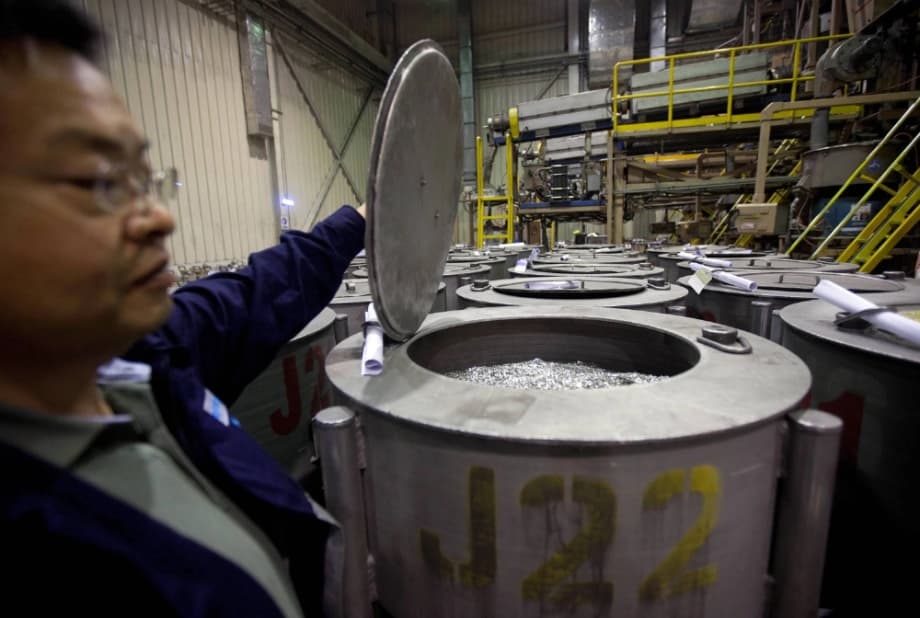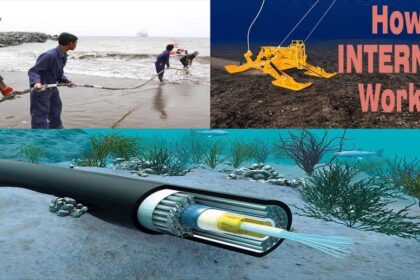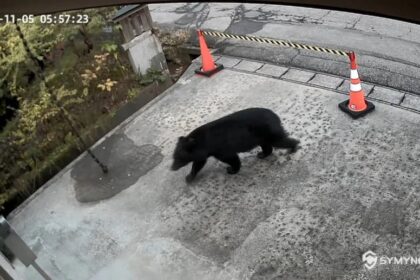A New Phase in Supply Chain Power Politics
China has moved to tighten control over rare earth materials that are central to modern industry, introducing sweeping export restrictions that reach far beyond its borders. The new rules require companies to obtain licenses from Beijing before exporting a wide range of rare earth elements, magnets, and products containing even trace amounts of Chinese processed materials. The measures also cover technologies and specialized equipment used to mine, separate, and recycle rare earths. This approach resembles the extraterritorial controls Washington uses in semiconductors, but it targets inputs that run through nearly every industrial sector, from electric vehicles and smartphones to advanced weapons and radar.
- A New Phase in Supply Chain Power Politics
- What Exactly Is Changing in the Rules
- Why These Metals Matter for Modern Life
- How the Rules Reach Beyond China’s Borders
- Markets and Politics React
- Defense Exposure and Supply Risks
- Electric Vehicles, Semiconductors, and Clean Energy
- Can Alternative Supply Chains Fill the Gap
- What This Means for Business Planning Right Now
- The Bottom Line
The timing is strategic, coming ahead of a planned meeting between President Donald Trump and President Xi Jinping. Washington has threatened to impose tariffs of 100 percent on Chinese imports if Beijing proceeds. Europe and Japan have voiced alarm, and industry groups are warning of supply disruptions. Rare earths are a group of 17 elements that enable high performance magnets and other components used in electric motors, wind turbines, precision guidance, and displays. China accounts for roughly 60 percent of global production and more than 90 percent of processing. The licensing system could reshape trade flows across the auto, defense, energy, and semiconductor sectors within weeks.
Henry Farrell, a political scientist at the Johns Hopkins School of Advanced International Studies, said the step highlights how deeply intertwined the two economies are and how both sides are now willing to exert control over shared supply chains to pursue national objectives.
“The United States and China are now very clearly in a much more delicate stage of mutual interdependence,” he said.
Beijing’s move signals confidence that it can use its dominance in processing and magnet manufacturing to extract concessions in trade talks and to police end uses it regards as sensitive. Foreign firms now face a new layer of compliance: mapping the origin of every gram of rare earths in their products and proving where and how those materials were processed.
What Exactly Is Changing in the Rules
China’s Ministry of Commerce has expanded export controls in stages this year. The initial tranche required special licenses for seven rare earth elements used widely in magnets and phosphors: samarium, gadolinium, terbium, dysprosium, lutetium, scandium, and yttrium. The latest step adds five more metals to the controlled list, bringing the total to 12 out of the 17 rare earth elements. The newly covered metals are holmium, erbium, thulium, europium, and ytterbium. Authorities also added controls on equipment and know how used for mining, smelting, separation, magnet manufacturing, and recycling.
Several features of the regime extend its reach. License requirements can apply if Chinese rare earths make up as little as 0.1 percent of a product’s value, according to guidance referenced by industry groups. Licenses may also be needed for rare earths produced outside China using Chinese technologies, and officials say applications tied to foreign military end uses will be denied. Officials describe the program as a licensing system, not a blanket ban, but industry expects a pause in shipments while applications are assessed and new compliance systems are built. Most of the new rules take effect on December 1.
Chinese officials frame the move as a national security measure designed to prevent sensitive transfers. Lin Jian, a spokesperson for the Ministry of Foreign Affairs, criticized Washington’s approach to trade and technology restrictions, while defending Beijing’s response.
“The United States talks about engagement on one hand while resorting to threats and intimidation on the other, imposing steep tariffs and introducing new restrictive measures. This is not the right way to engage with China,” Lin said.
Beijing has carved out exceptions for emergency needs related to public health or disaster relief, but the core licensing system is broad. Companies seeking approvals will need to explain end uses and supply chain partners in detail, a process that has triggered concerns about commercial confidentiality in North America, Europe, and Japan.
Why These Metals Matter for Modern Life
Rare earths are not truly rare in the Earth’s crust, but they are seldom found in concentrations that are economical to extract. Mining and refining are capital intensive and environmentally challenging. Within the family of 17, heavy rare earth elements such as dysprosium, terbium, and holmium are particularly crucial because they improve the performance and heat tolerance of permanent magnets used in electric vehicle motors, drones, guidance systems, and radars. Europium and yttrium are essential in phosphors for lighting and displays. Even trace additions of heavy rare earths can determine whether a magnet will hold up in a jet engine bay or a high speed electric drivetrain.
China’s edge lies in processing and magnet manufacturing, the most complex parts of the chain. The International Energy Agency estimates that China produces about 61 percent of rare earth ore, but it processes roughly 90 to 92 percent of global supply and dominates magnet production. The United States relies on China for about 70 percent of its rare earth imports, based on recent US Geological Survey data. New projects backed by the US Department of Defense aim to rebuild a mine to magnet capability by the middle of the decade, yet output will still trail China for years. Heavy rare earth separation remains a particular gap in North America and Europe.
Gracelin Baskaran, a critical minerals expert, said the rules that target military end uses raise urgent concerns for defense supply lines.
“What this essentially means is that [China] will deny licenses to foreign militaries and companies that are producing military use end goods. It undermines the development of the defense industrial base at a time when there is rising global tension. It is a very powerful negotiating tactic because it undermines national security,” she said.
How the Rules Reach Beyond China’s Borders
Many products incorporate Chinese refined rare earths even if final assembly happens somewhere else. That is typical for permanent magnets, where powders and alloys processed in China are shipped worldwide and cut to shape close to customers. The new licensing regime requires exporters to prove provenance. If a motor, sensor, or chip polishing compound contains rare earths that were refined in China, the exporter may need Beijing’s approval to ship it, even if the item is leaving a factory in Europe or Southeast Asia. Suppliers are already asking customers for attestations, and manufacturers are combing through bills of materials to document the origin of powders and precursors.
Analysts draw a comparison to the foreign direct product rule that Washington used to cut off high end chips to Chinese firms. The difference here is breadth. Rare earths touch everything from automotive drivetrains and wind turbines to precision machine tools. Licensing will also demand sensitive data from firms that are protective of their formulations and customer lists, which could add friction and delay even when licenses are granted.
Chris Miller, a historian of technology and author, said the new rules could affect a large range of electronics and industrial goods.
“The effects could be extraordinarily broad, touching almost all semiconductor supply chains,” he said.
Xiaomeng Lu, a director at Eurasia Group, said the scope of the licensing system has unsettled companies and governments that once assumed rare earths would keep flowing despite political tensions.
“It scares the rest of the world how far China is willing to go in upending the global supply chain,” she said.
Markets and Politics React
Washington has threatened a new round of sweeping tariffs on Chinese goods, with a 100 percent rate proposed to take effect on November 1 unless Beijing backs away. Chinese officials have criticized US measures on technology and shipping and have rolled out countersteps, including new port fees and a tighter licensing net for rare earths and related technology. After the latest announcements, equity markets swung sharply as investors reassessed risks to automakers, defense contractors, and chipmakers that rely on Chinese processed materials.
Jamieson Greer, the United States Trade Representative, described the licensing push as an unacceptable assertion of control over global supply lines and called for a pause while talks continue. European officials voiced concern about what the European Union’s trade chief called a critical challenge for homegrown industry. Japan has urged a coordinated response through the Group of Seven. As both sides signal that dialogue remains possible, businesses are preparing for a period of scarce supply and high price volatility.
Greer said the goal is to avoid a spiral of retaliation and to keep the negotiations on track.
“Our expectation is that this never goes into effect,” he said.
Jeremy Siegel, professor emeritus of finance at the University of Pennsylvania, argued that the United States needs insurance against shocks in critical inputs.
“It is scandalous that we do not have a rare earths strategic reserve, that we let China monopolize 90 percent of refining,” he said.
Defense Exposure and Supply Risks
The defense sector is uniquely exposed. Rare earth magnets and alloys are embedded in systems that cannot easily be redesigned, including the F35 fighter jet, Virginia and Columbia class submarines, Predator drones, Tomahawk cruise missiles, phased array radar, and the Joint Direct Attack Munition series of guidance kits. Even a handful of magnets can halt assembly if supplies dry up. Beijing has stated that licenses will be denied when items are destined for foreign military use, which raises the risk of gaps in maintenance and production across allied arsenals.
The United States has started to rebuild capacity. The Department of Defense has supported investments in separation and magnet making, including a framework agreement with MP Materials that includes price floors and an equity component. These steps are important for resilience, yet they take time. Heavy rare earth separation lines are complex chemical systems that can take years to build and optimize. Procurement officers are drawing up contingency plans, and contractors are reviewing where to source critical magnets and phosphors without Chinese inputs.
Alicia Garcia Herrero, an economist who tracks global supply chains, said the defense, semiconductor, and electric vehicle sectors would feel the greatest strain if licensing becomes stringent. She warned that exposure is concentrated in a relatively small number of components that lack immediate substitutes.
Electric Vehicles, Semiconductors, and Clean Energy
Automakers in the United States and Europe are warning of delivery risks. The German Association of the Automotive Industry said curbs put in place earlier this year already tightened supplies for motors and battery components, and the new rules go further. Italian auto part makers report that inventories of specific rare earths are at risk of depletion if license approvals lag. Permanent magnets based on neodymium and praseodymium are often doped with dysprosium or terbium to handle high temperatures in traction motors. If those additives are constrained, firms face higher costs or reductions in performance. Some manufacturers can pivot to ferrite magnets in select models, but that typically increases weight or reduces efficiency.
Rare earths also touch the semiconductor industry. They are used in polishing slurries for wafers, in certain lasers and lithography components, and in high frequency filters. If Chinese inputs in polishing compounds or specialty ceramics require licensing, chip fabrication plants could face delays. Similar concerns extend to renewable energy. Wind turbines, industrial robots, magnetic resonance imaging scanners, and high end audio equipment all rely on powerful magnets that are difficult to replace at short notice.
Rico Luman, a sector economist at ING, said processing dominance is the key leverage point.
“China controls 90 percent of global refinery capacity, making it a bottleneck in the supply chain,” he said.
Can Alternative Supply Chains Fill the Gap
Several countries are working to build out non Chinese supply lines. Australia’s Lynas has long been the only significant producer of separated rare earths outside China and is investing in capacity in Texas to serve North American customers. The United States is supporting new separation and magnet plants, while Canada is advancing mining projects. Vietnam, Brazil, and South Africa have promising deposits, and Japan has invested in projects and recycling. Saudi Arabia has signaled interest in critical minerals as part of its industrial strategy. These efforts could reduce vulnerability, yet the clock is a problem. Heavy rare earth separation plants require years to design, permit, and bring online. Expertise in solvent extraction and impurity control is hard won, and the cost of environmental safeguards is high.
Recycling and substitution can help at the margin. Automakers are working on motor designs that reduce heavy rare earth content. Some wind turbine makers use direct drive systems with fewer rare earths. Researchers are exploring new magnet chemistries. These approaches reduce exposure over time but will not offset a sudden licensing squeeze in the near term. Customers used to just in time deliveries are building buffer inventories where possible, and some are rewriting contracts to specify non Chinese sources of powders and alloys.
Yeling Tan, a professor at Oxford University, said the extraterritorial nature of the licensing requirements could carry a cost for Beijing if partners perceive China as unpredictable.
“This threatens to undermine China’s credibility as a reliable trading nation. It is an incredibly delicate balance to strike,” she said.
What This Means for Business Planning Right Now
Compliance teams should map their rare earth exposure in detail, tracing powders, alloys, magnets, and phosphors to their refiners. Suppliers are increasingly seeking attestations of origin, and companies may need to submit sensitive data to Chinese authorities when seeking licenses. Exporters that touch defense, aerospace, or dual use technologies should prepare for denials or long processing times and adjust delivery schedules accordingly. Firms that rely on Chinese processed materials may need to split product lines into China exposed and China free variants to preserve access to markets.
Procurement and finance leaders are looking at multiyear contracts with non Chinese producers and magnet makers, financing of separation projects, and joint ventures that locate new capacity close to final assembly plants. Some are evaluating inventory strategies that cover several months of demand in critical parts. Legal teams are reviewing tariff exposure under proposed United States measures and potential European responses. Boards are treating rare earths as a strategic risk on par with energy security and semiconductor supply, and are stress testing the impact of stricter licensing under several scenarios.
The Bottom Line
- China expanded rare earth export controls to 12 of 17 elements and added restrictions on related technology and equipment.
- Licenses may be required if Chinese processed materials make up as little as 0.1 percent of a product’s value, extending the rules beyond China’s borders.
- Beijing has said licenses tied to foreign military end uses will be denied, raising risks for defense supply chains.
- China processes about 90 to 92 percent of global rare earths and produces about 61 percent of ore, which gives it leverage.
- The United States relies on China for roughly 70 percent of rare earth imports and is years away from full mine to magnet capacity.
- Automakers, chipmakers, and renewable energy suppliers warn of shortages, higher costs, and delivery delays if licenses are slow or denied.
- Washington has threatened 100 percent tariffs on Chinese imports, while Europe and Japan are pressing for coordinated responses.
- Alternative supply chains are in progress in Australia, the United States, and elsewhere, but new heavy rare earth separation capacity takes years to build.












